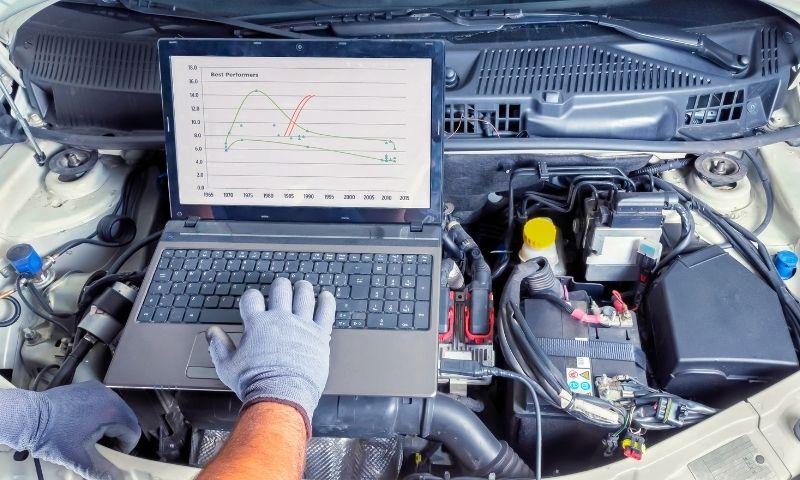A Leading Resource Built By Automotive Lovers, For Automotive Lovers.
We’ve helped consumers around the world make their purchasing decisions.
Latest Articles
An alkaline battery is a type of dry cell. It uses a paste of zinc metal and potassium hydroxide, unlike the zinc-carbon dry cell, which has a solid metal anode…. Yes, a maintenance-free battery can be charged. “Maintenance-free” means you do not need to add liquid during its lifespan. The vehicle’s alternator automatically handles charging when you start the car…. A battery is a type of galvanic cell. It stores reactants needed for electricity production and generates power through internal chemical reactions. A fuel cell, also a galvanic cell, needs… A magnet cannot directly charge a battery. However, it can create electrical energy through its magnetic field in coils. This induced current can then charge batteries. This principle is used… A magneto can charge a battery, but its main job is to generate current for the spark plug in small gasoline engines. This process allows engines to operate without a… A flooded battery is also called a wet cell battery. It is a type of lead-acid battery that uses a liquid electrolyte solution. This solution consists of water mixed with… A portable charger is typically a battery bank that stores energy for charging devices. It offers convenience and versatility. In contrast, a fuel cell generates electricity through a chemical reaction,… You can use a lithium charger for a lead acid battery, but it is not recommended. Lithium chargers have safety risks, such as fire. Lead acid batteries need specific chargers… A lead storage battery is a type of standard galvanic cell. It produces electricity through chemical reactions. During recharging, an alternator supplies higher voltage, reversing the discharge process. This restores… A lithium battery can be charged with a regular lead-acid charger, but this is not safe. Using a lead-acid charger can lead to risks, faults, and incomplete charging. To ensure… A jump starter can charge a car battery temporarily by providing power output. However, it is not meant for long-term charging. Its main purpose is to start the vehicle so… Yes, a lawnmower battery can be a wet cell. This includes flooded batteries, which need maintenance like checking the electrolyte level and adding distilled water. There are also sealed batteries,… A laptop battery is usually a lithium-ion cell. Lithium-ion batteries are known for their high energy density and rechargeability. They are lightweight and last long, making them ideal for laptops…. The Jackery Solar Generator 600 Plus can charge a car battery. This mid-size, solar-powered generator has high outdoor durability and a strong energy output. It powers appliances like camping lights… A jump pack is a portable device that can charge a dead battery in a car. It is user-friendly, allowing individuals to jump-start their vehicles without needing help from another… Yes, a hybrid battery can be charged. Plug-in hybrid vehicles (PHEVs) allow drivers to recharge their batteries using a wall outlet or charging station. This capability lets PHEV owners use… AGM (Absorbent Glass Mat) batteries and GEL batteries are different. AGM batteries excel in high-current applications and extreme cold environments. GEL batteries, however, usually last longer in hot climates. Each… Gel cell batteries are superior for boat use. They contain a gel electrolyte, which prevents spillage unlike traditional batteries with liquid electrolytes. This design enhances vibration resistance and stability in… The Halo Bolt cannot charge a standard 12V deep cycle car battery. It has a capacity of 58.8 watt hours or 4.9 amp hours. In comparison, a typical 100 amp… A galvanic cell is a type of battery. It converts chemical energy into electricity. A battery includes one or more galvanic cells with reactants that produce electricity. Galvanic cells can… A half charged car battery can start an engine, but success varies. Batteries usually perform well around 75% charge. Many can crank an engine at 50%, but factors like extreme… Yes, a generator can charge a car battery, typically for emergency or short-term use. You can use the generator’s DC output for a trickle charge. For safer and more effective… A flow battery is a type of wet cell. It has two tanks with liquid electrolytes. These electrolytes engage in electrochemical reactions while separated by a membrane. Flow batteries, known… Yes, a generator can charge a battery. Most portable generators have a 12V output. However, they typically provide unregulated output around 13.6 volts. This voltage is not efficient for charging… A flashlight battery is a dry cell. It does not contain liquid like a wet cell battery, which often holds acid. Wet cell batteries can be rechargeable and last longer,… Yes, a fully charged battery can be bad. It may read 12.6 volts yet fail a load test, meaning it cannot deliver current. A “dead” battery may show a surface… A dry cell battery is an electric battery used in portable devices. Most dry cell batteries are non-rechargeable, which raises environmental concerns. Although they are maintenance-free and effective for energy… A float charger can charge a battery by providing a steady, low voltage. This method prevents overcharging and keeps the battery fully charged for longer. While it may take time… A faulty charger can drain your phone’s battery. A damaged or counterfeit charger delivers uneven power, making your device lose battery faster. Poor charging speed affects battery health and efficiency,… A dynamo can charge a battery. Most dynamo hubs generate 6 volts of alternating current (AC). This current is converted to direct current (DC) for charging. The typical output is…Is an Alkaline Battery a Dry Cell? Explore Their Differences and Advantages
Can a Maintenance Free Battery Be Charged? Myths, Best Practices, and Lifespan Tips
Galvanic Cell vs. Battery: Key Differences, Confusions, and Definitions Explained
Can a Magnet Charge a Battery? Testing Magnetic Induction and Its Effects on Lithium-Ion Batteries
Can a Magneto Charge a Battery? Understanding Magneto Ignition in Small Engines
Wet Cell Battery vs. Flooded Cell: Key Differences and Maintenance Guide
Portable Charger: Battery Bank vs Fuel Cell – Key Differences & Usage Scenarios
Can a Lithium Charger Charge a Regular Battery? Compatibility with Lead Acid Explained
Lead Storage Battery vs. Standard Galvanic Cell: Key Differences Explained
Can a Lithium Battery Be Charged with a Regular Charger? Risks and Compatibility Insights
Can a Jump Starter Be Used to Charge a Battery? Understanding Trickle Charging Options
Is a Lawnmower Battery a Wet Cell? Differences, Maintenance Tips, and Buying Guide
Is a Laptop Battery Ion Cell or Metal Cell? A Guide to Types and Longevity
Can a Jackery Charge a Car Battery? Power Station Compatibility and DIY Tips
Jump Pack: Can It Charge a Battery? Exploring Portable Power Solutions and Consequences
Can a Hybrid Battery Be Charged? Methods, Tips, and Everything You Need to Know
Is a Gel Cell Battery the Same as AGM? Key Differences and Best Applications Explained
Is a Gel Cell Battery Better for a Boat Battery? Explore Key Advantages and Disadvantages
Can a Halo Bolt Charge a Car Battery? Explore Its Jump-Starting Power and More!
Galvanic Cell vs. Battery: Key Differences, Similarities, and Chemistry Explained
Can a Half Charged Battery Start a Car? Understanding Minimum Voltage and Charging Methods
Can a Generator Charge a Car Battery? Easiest Methods for Offgrid Power Solutions
Is a Flow Battery a Wet Cell? Overview of This Unique Energy Storage Solution
Can a Generator Charge a Battery? The Easiest Way to Power Your Offgrid RV Battery
Is a Flashlight Battery a Wet Cell? Differences and Uses of Battery Types
Can a Fully Charged Battery Be Bad? Symptoms and Signs of Battery Failure
Is a Dry Cell Battery Renewable? Its Role in Solar Energy Storage Explained
Float Charger: Can It Charge a Battery? Explore Charging Methods and Maintenance
Can a Faulty Charger Drain Battery? Troubleshooting Tips for Phone Battery Issues
Can a Dynamo Charge a Battery? Effectiveness for 12V and E-Bike Applications Explained



